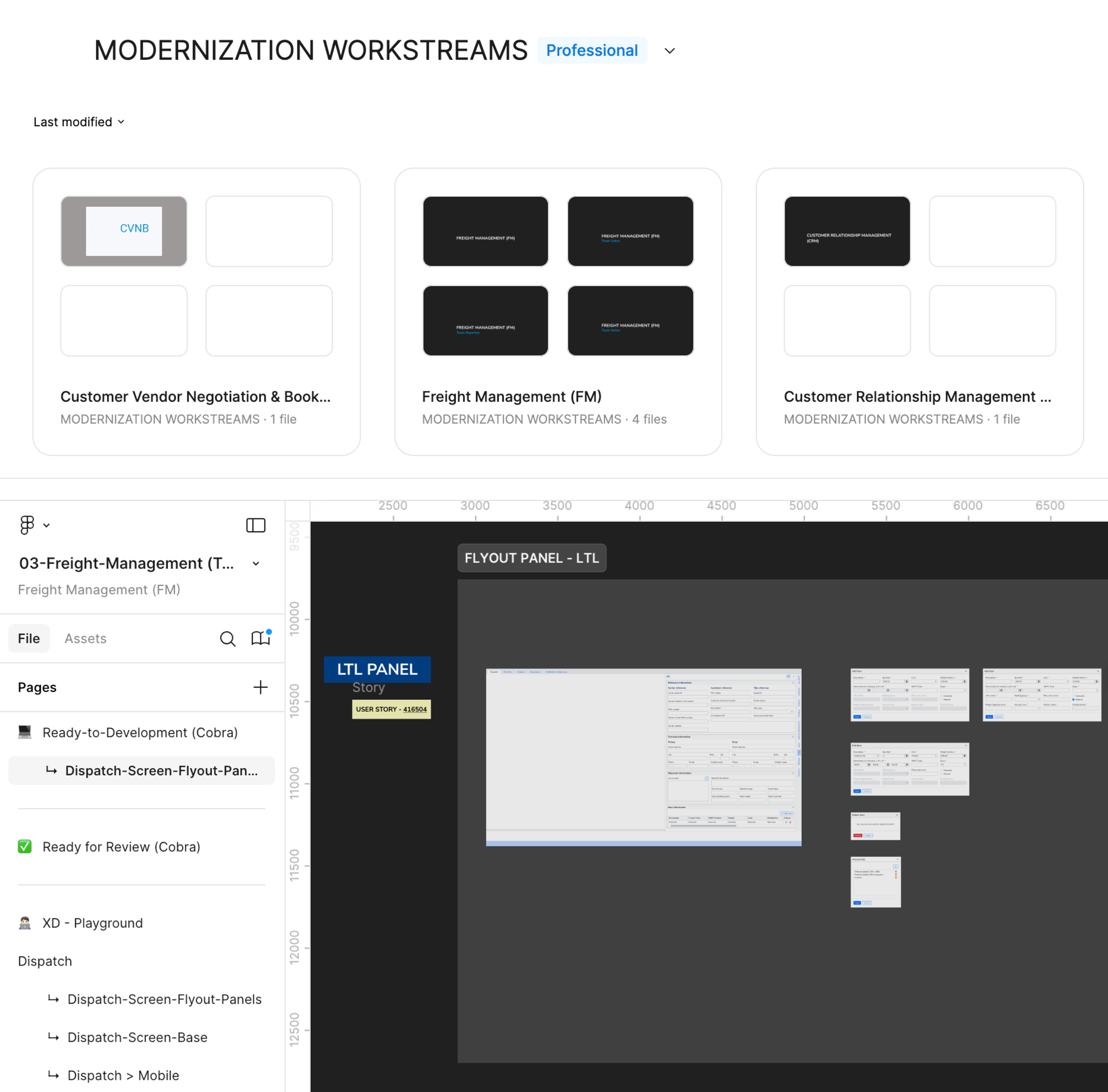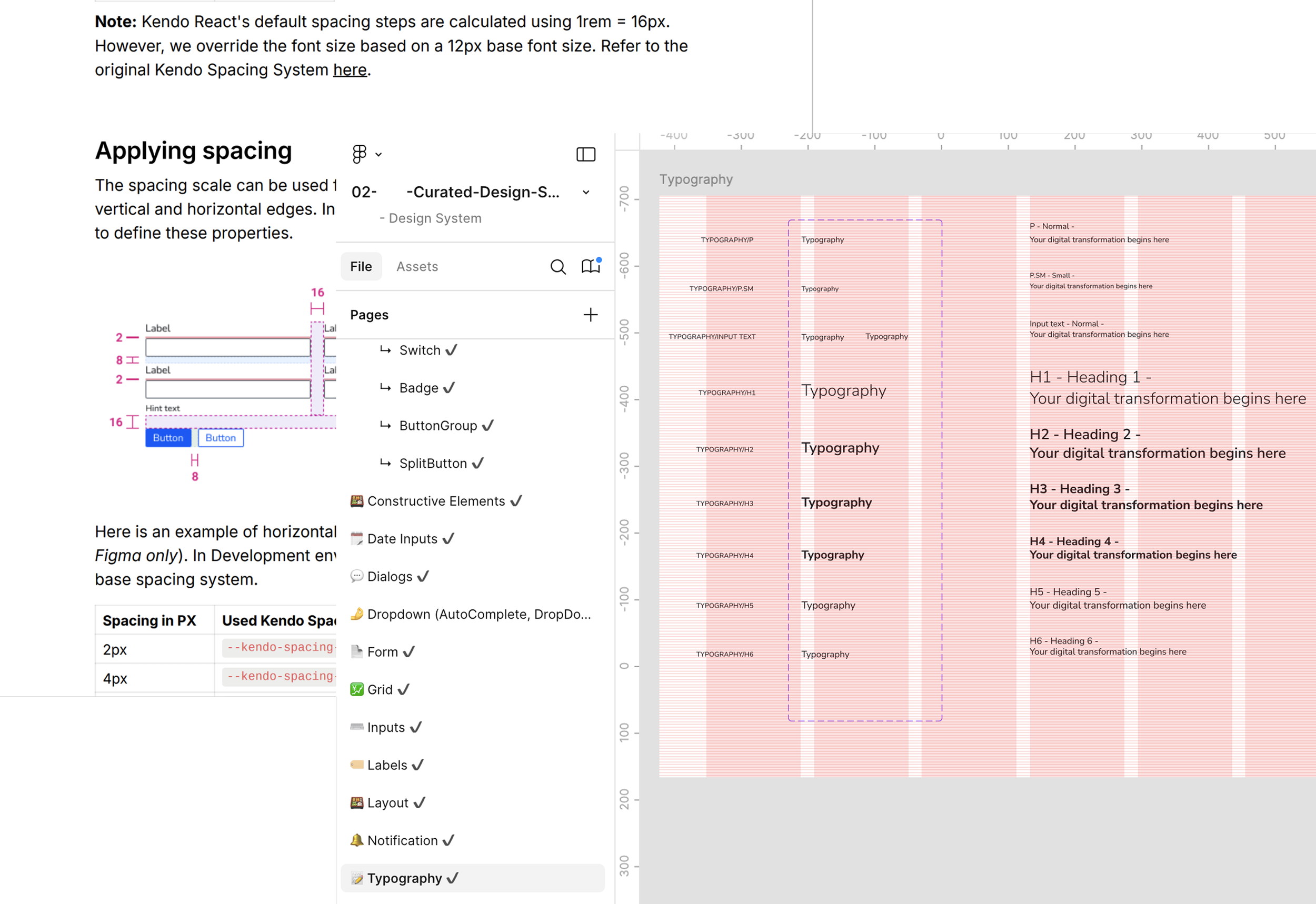
Modernizing a logistics platform to streamline operations and scale with speed
Industry: Logistic
Duration: 6 months
Role: Lead Designer
Objective: To modernize the Load Manager platform by improving its user experience and technical foundation, enabling faster onboarding, reduced analysis time, and greater scalability to support business growth and automation.
Activities:
Ideation, co-creation, and prioritization workshops
Low and high-fidelity mockups and prototypes
User testing
Design System creation
Project Background
A leading logistics company that connects customers with shipping needs to carriers relies on Load Manager as the core platform supporting its brokerage services.
Over the years, Load Manager evolved organically, resulting in a fragmented user experience and a complex, outdated technical environment.
This created hurdles in scaling, delayed decision-making, and increased onboarding time. To address these pain points, the company partnered with our team to modernize the platform’s user experience and technical foundation, with an emphasis on speed, automation, and usability.
My Role and Responsibilities
I was the lead designer for one of the key workstreams in the Load Manager modernization effort. I worked cross-functionally with product managers, engineers, and other designers to transform complex logistics workflows into a more intuitive, scalable interface.
Beyond my workstream, I also played a key role in shaping the global design system, helping to define and document reusable components, standardize Figma files, and streamline collaboration with development.
I facilitated design workshops to align on shared patterns, address cross-team challenges, and drive consistent design decisions across the program.
Process and Approach
Our team followed a structured process to understand the pain points, align on strategic goals, and design an intuitive experience that met users' needs.
Ideation and Collaboration
Planned and facilitated workshops with stakeholders to gather insights, define key objectives, and shape the product vision.
Collaborated with the product owner to write user stories that aligned with business goals and user needs.
Refinement and Alignment
Participated in pre-refinement and refinement sessions to clarify and finalize requirements, ensuring alignment across teams.
Conducted desk checks with developers during the delivery phase to ensure smooth implementation and identify any design issues early on.
Design System Development
Contributed to the definition and refinement of the design system, ensuring consistency across the product.
Helped establish design tokens, reusable components, and detailed documentation to promote scalability and ease of use for the team.
Worked with cross-functional teams to integrate and scale the design system to support current and future product features.
Ongoing Iteration and Delivery
Ensured frequent communication with development teams to address feedback, track progress, and guarantee design fidelity.
Supported the product’s evolution by refining design elements based on team and stakeholder feedback.
Challenges and Solutions
Challenges:
Technical debt slowed development velocity and limited scalability.
Outdated UX led to long onboarding and training cycles.
Disjointed communication between design and development teams.
Inconsistent file structure and legacy variables created friction in Figma.
Limited documentation and design system adoption resulted in repetitive work and unclear handoffs.
Pressure for quick decisions often outpaced design readiness.
Lack of clarity on screen sizes and component usage created confusion.
Missed user feedback contributed to usability gaps and inconsistent updates.
Solutions:
We focused on modernizing one core workstream within Load Manager, collaborating closely with product, engineering, and other workstreams. Our design approach prioritized simplification, clarity, and modularity. We:
Created scalable design components and templates grounded in a unified design system.
Helped streamline Figma files and variable use, reducing complexity for dev handoff.
Aligned design with development via better documentation, prototypes, and naming conventions.
Advocated for accessibility and user feedback integration throughout.
Supported cross-team alignment by sharing best practices and driving consistency across workstreams.
Impact and Results
The modernization of Load Manager brought meaningful improvements to both the user experience and the underlying system design. Through close collaboration, iterative design, and system-wide enhancements, we were able to support the business goals of scalability, speed, and usability.
Improved usability and consistency across the platform through the implementation of a shared design system
Reduced onboarding time by simplifying key workflows and improving UI clarity
Supported faster delivery cycles by aligning design with development through desk checks and shared design standards
Helped product teams make informed decisions faster by contributing to user story writing and refinement
Established a scalable foundation for future enhancements and automation through reusable design patterns and components
Reflections
This project highlighted the critical role of a robust design system in ensuring consistency and efficiency across the platform. It was a great opportunity to strengthen my collaboration skills, particularly working closely with product owners and developers to align on goals and accelerate delivery. The iterative approach to design and frequent user testing proved essential in addressing both user needs and business requirements.
I was able to navigate technical constraints creatively, delivering user-friendly solutions while reducing technical debt. Overall, this project helped me grow as a designer and leader, sharpening my ability to guide teams through complex design decisions and contribute strategically to the product’s evolution.







